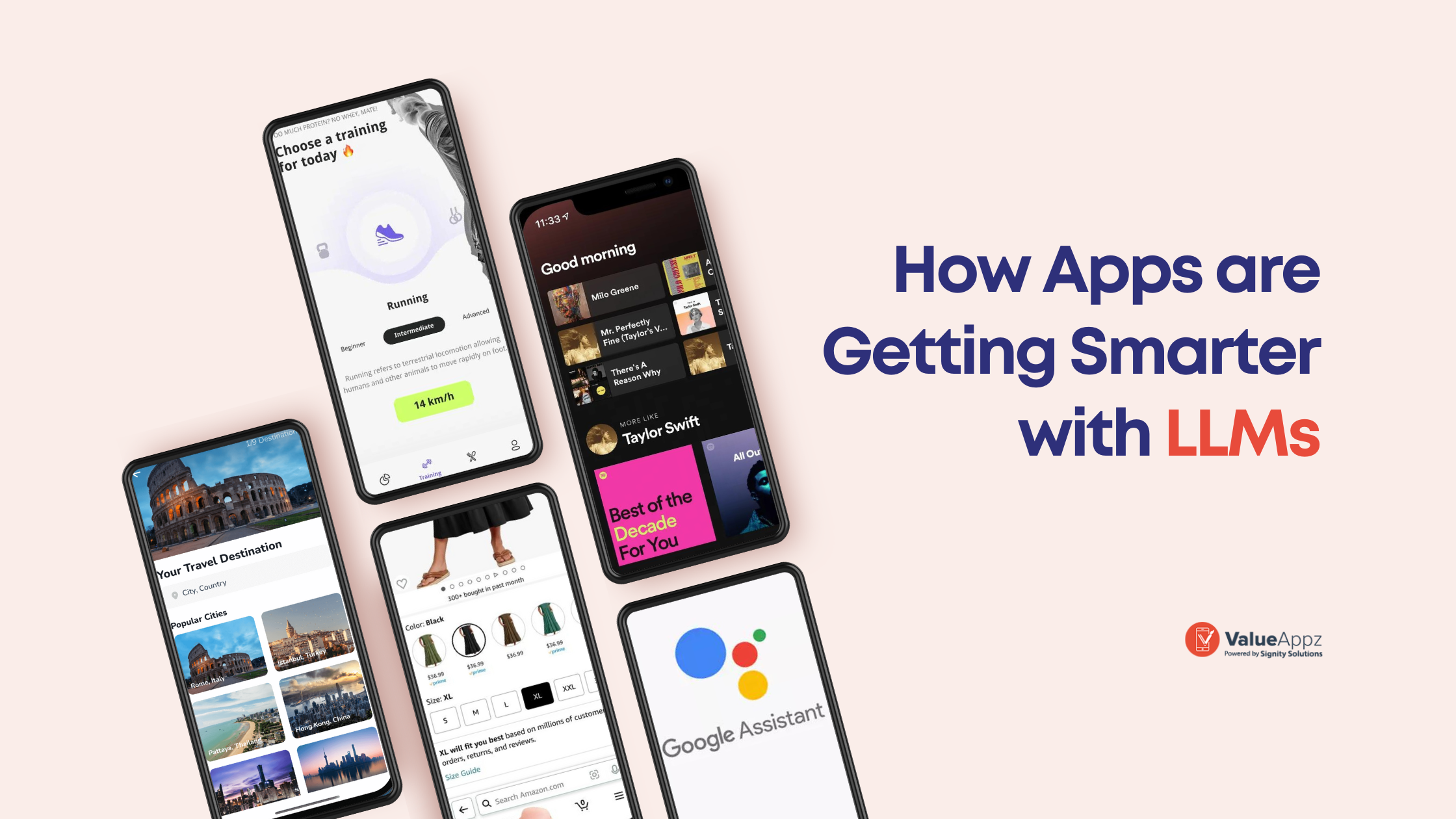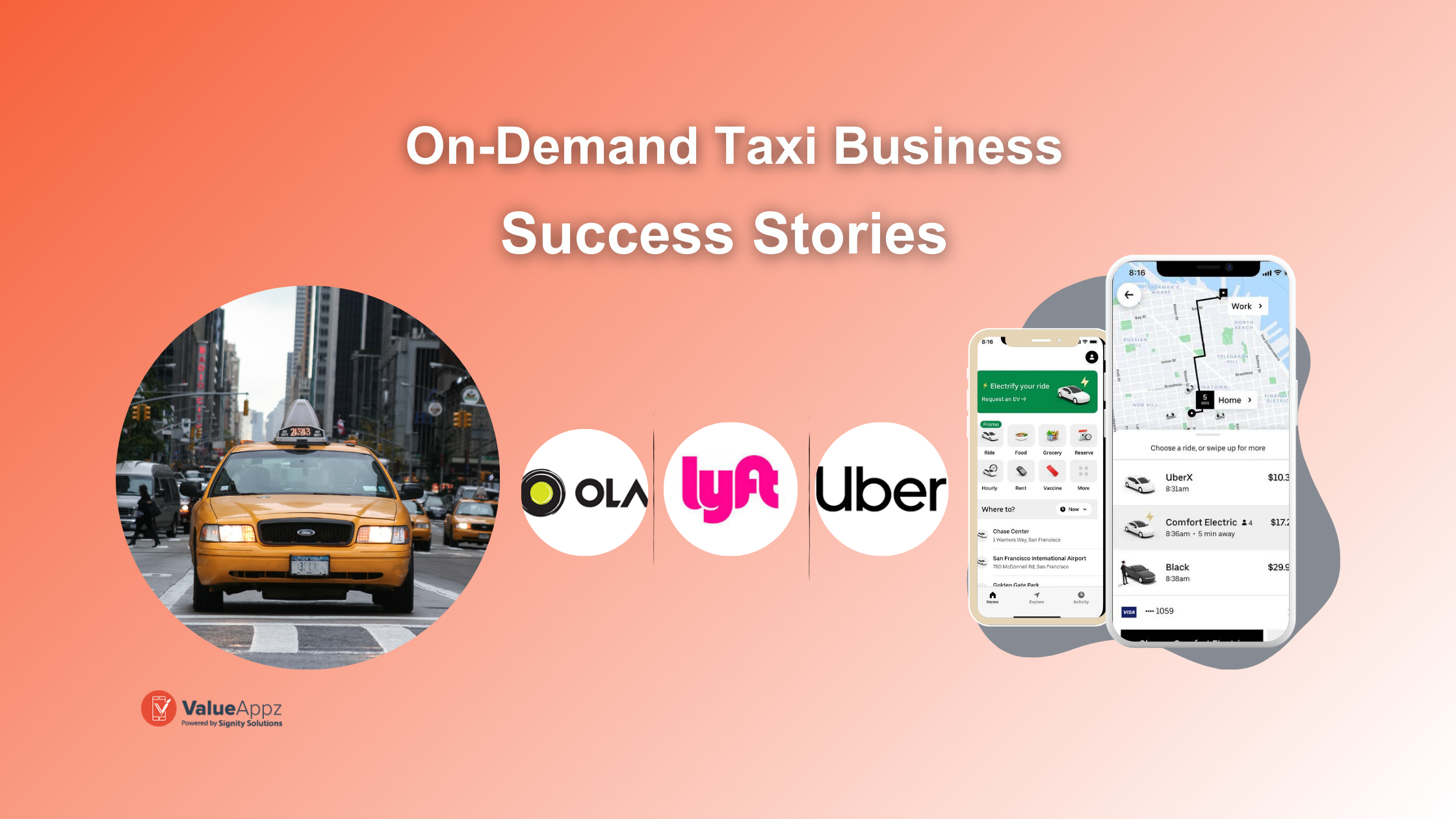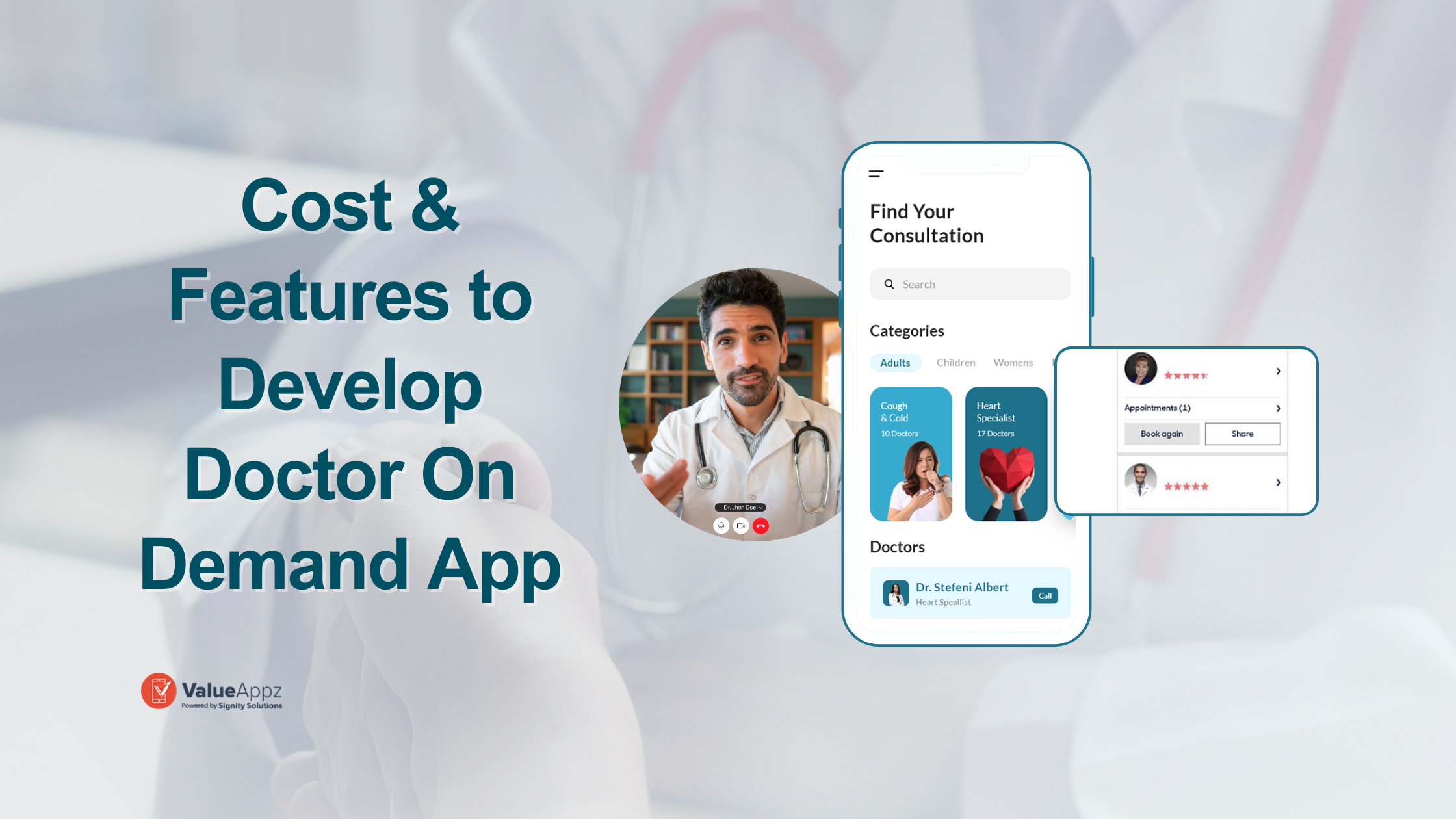The Future is Here: LLMs Personalizing Apps Like Never Before

Summary: What is one thing that users look for in each app? It is a recommendation based on their preferences and choices. With LLM (Large Language Model) in the picture, you can enhance your app growth so that the users feel connected and valued. Want to know more about it? Our blog will provide complete information on how LLM apps can help improve.
Today’s apps are all about providing a great user experience. Whether you own a food delivery app or run a home services marketplace, until and unless your users do not feel connected, you cannot expect a good retention rate.
But how do you ensure that users always get a good experience? With the help of Large Language Models, personalization becomes easy. Hence boosting customer satisfaction and loyalty.
As per the reports, by 2025, there will be about 750 million apps leveraging the power of LLM models. Let’s understand this with an example. LLM-led apps can deploy advanced chatbots that provide personalized assistance to users. These chatbots have the ability to understand user queries better, predict their needs, and offer tailored solutions.
Check out our blog and learn how you can use LLMs to improve your customer experience.
Table of Contents
What Exactly are LLMs?
Large Language Models (LLMs) are a type of AI model that is capable of generating human-like language. These models can produce creative text formats, translate languages, answer questions with informative responses, and so on.
On the other hand, LLM is also being used to improve customer experience in the applications. From recommending a restaurant based on the user’s preferences to suggesting products based on the user’s buying history, the LLM use cases in the application have a long list.
These are just a few examples of LLMs in AI applications. The section below explains real-world examples of LLMs.
Real-World Examples of LLMs in Action
LLMs Large Language Models are making apps smarter and more helpful, using user behavior to anticipate their needs. From education to entertainment, LLMs are changing the way we interact with technology.
1. Shopping Apps:
Retail giants like Amazon leverage LLM technology in their recommendation engines. Ever notice how Amazon seems to magically suggest that perfect pair of shoes to complement the dress you just viewed? LLMs analyze your browsing behavior and purchase history, creating a personalized shopping experience that keeps you engaged

2. Entertainment Curated for You:
Ever gotten stuck in a music rut? Streaming services like Netflix and Spotify are masters of personalization that uses Large Language Models.
Netflix’s recommendation system goes beyond simply suggesting similar shows – it analyzes your viewing habits and recommends hidden gems or specific genres you might enjoy. Similarly, Spotify’s Discover Weekly playlist uses LLM technology to analyze your listening history and curate playlists with new music that goes beyond just similar artists.
3. Travel Apps:
The travel industry is embracing LLMs to personalize the guest experience. Imagine using the Hilton Honors app and having it suggest local attractions based on your past travel behavior, all through a natural language chat interface.
Marriott Bonvoy leverages LLMs to personalize communication – you might receive in-app recommendations for restaurants you’d love based on your dietary preferences or past travel experiences.

4. Fitness Apps:
Nike Training Club is rumored to be exploring LLM technology to personalize workout recommendations. Imagine the app analyzing your past workout data, fitness goals, and even wearable data to suggest personalized workout routines that challenge you and keep you motivated.

5. Voice Assistants:
Siri, Alexa, and Google Assistant are becoming more helpful and conversational thanks to LLMs. They can understand your natural language requests and even answer your questions in a more informative way.
This is just the beginning – the future holds even more exciting possibilities for how LLMs will revolutionize the way we use technology.
How To Train Large Language Models(LLMS)
Training LLMs is no small feat. It involves a complex interplay between data, algorithms, and computational power. Here’s a simplified glimpse into the training process:
- Data Preprocessing: The raw text data undergoes cleaning and preparation. This might involve removing irrelevant information, correcting errors, and ensuring the data is formatted appropriately for the LLM.
- Feeding the Beast: The preprocessed data is fed into the LLM algorithm, one chunk at a time.
- Predictive Power: The LLM attempts to predict the next word in a sequence based on the preceding words it has seen. Think of it like learning a language by seeing patterns in how words are used together.
- Learning from Mistakes: The LLM’s predictions are compared to the actual next word in the sequence. If it’s wrong, the algorithm adjusts its internal parameters to improve its accuracy for the next prediction.
- Rinse and Repeat: This process of feeding data, predicting, and adjusting is repeated millions, or even billions, of times. The more data the LLM sees, the better it becomes at understanding language patterns and generating human-quality text.
Potential Benefits & Challenges of LLMs for App Development
Large Language Models (LLMs) are transforming the app development landscape. While they offer exciting opportunities to personalize experiences and make apps smarter, there are also challenges to consider. This section dives into both sides of the coin, exploring the top benefits of Large Language Models for app development, like creating personalized experiences and enabling natural language interactions. We’ll also address the key challenges developers need to navigate, keep reading for a comprehensive look.
| Benefits of LLMs for App Development | |
| Benefit | Description |
| Personalized Spot-on Suggestions | LLMs can analyze user behavior within an app to suggest relevant products, content, or features, creating a more engaging and satisfying user experience. |
| Natural Language Interactions | LLMs can power chatbots and voice assistants that understand natural language, allowing users to interact with apps in a more intuitive and conversational way. |
| Predictive Power | LLMs can analyze data to anticipate user needs, enabling apps to suggest relevant actions or information before the user even asks. |
| Accessibility Improvements | LLMs can personalize features to cater to diverse user needs, making apps more accessible for everyone. |
| Challenges of LLMs for App Development | |
| Challenge | Description |
| Data Privacy Concerns | LLMs rely on vast amounts of user data to function effectively. This raises concerns about data privacy and security. Developers need to ensure user data is collected and used responsibly. |
| Bias and Fairness | LLMs trained on biased data can perpetuate those biases in their recommendations and interactions. Developers need to be mindful of potential biases and take steps to mitigate them. |
| Explainability and Transparency | How LLMs arrive at their recommendations or responses can sometimes be opaque. A lack of transparency can make it difficult for users to trust the app’s suggestions. |
| Computational Cost | Training and running LLMs can require significant computing power, which can be expensive for developers. |
| Evolving Technology | LLMs are a rapidly evolving field. Developers need to stay up-to-date with the latest advancements to ensure their apps are using LLMs effectively. |
LLM Application Requirements: Building Smarter Apps for the Future
Large Language Models (LLMs) are revolutionizing app development, but their effectiveness hinges on user data. Here’s a breakdown of key considerations for developers before creating LLM apps:
- Data Collection with Transparency: Clearly define what data your app collects, how it will be used, and obtain explicit user consent before collecting any information.
- Robust Data Security: Implement robust security measures to safeguard sensitive user data. This includes encryption, access controls, and regular security audits.
- Mitigating Bias: Be mindful of potential biases within your training data. Employ techniques to mitigate these biases and ensure fair outcomes for all users.
- Explainable AI: Utilize explainable AI techniques to shed light on how LLMs arrive at recommendations or responses. This fosters user trust and understanding.
- Clear Communication: Maintain clear communication with users about how your app uses LLMs and the data it collects. This builds trust and empowers users to make informed choices.
- Diverse User Needs: Utilize LLMs to create features that cater to users with varying needs, including those with learning disabilities, visual impairments, or different language preferences.
- Cost-Effective Integration: Evaluate the cost-effectiveness of LLM integration for your specific app. Explore alternative LLM solutions that might be more resource-efficient.
- Staying Ahead of the Curve: The LLM landscape is constantly evolving. Stay informed about advancements in LLM technology to ensure your app can leverage these improvements in the future.
By carefully considering these factors, developers can build LLM-powered applications that are not only effective but also responsible, transparent, and inclusive. This approach fosters user trust and paves the way for a future where LLMs revolutionize the app development landscape.
How to Get Started in Embracing LLMs
Large Language Models (LLMs) are revolutionizing the app landscape, and businesses that don’t adapt risk falling behind. Here’s how companies can leverage LLMs to gain a competitive edge:
1. Research and Development: Stay informed about LLM advancements and explore potential applications within your industry.
2. Data Strategy: Develop a robust data collection and management strategy to ensure data quality, security, and ethical use.
3. Pilot Programs: Start small by implementing LLMs in specific app features to test their effectiveness and gather user feedback.
4. Transparency and Trust: Communicate openly with users about how LLMs are used and their impact on personalization. Build trust by prioritizing data privacy and user control.
Embracing LLMs is not just about keeping up with the times – it’s about creating a future where apps seamlessly integrate into our lives, offering an unparalleled level of convenience, satisfaction, and personalized experiences. The time to act is now.
How ValueAppz Can Help Enhance Your App Growth With LLM Models?
Working with AI technologies can be tough and complicated. That is why you need the help of professionals. Our team at ValueAppz is trained in using LLM models for unique app needs.
Whether you want to build a new app or enhance the performance of the existing application with LLM AI, we are right here to help you.
Connect with our professionals to get the best solutions for your business app.
Get in touch with us, and let’s discuss your taxi booking app idea.
Key Takeaways
- LLM models are redefining the user experience across all industries by predicting needs and delivering tailored solutions.
- LLM adoption is on the rise. By 2025, reports have projected that about 750 million apps will be LLM-driven.
- To boost your app’s success, you must make use of LLM to provide a better user experience.
- For successful LLM adoption, prioritize privacy, transparency, and bias mitigation.
Frequently Asked Questions
Q1: What are some applications of LLMs?
Some LLM applications include content recommendations, personalized notifications, customized user interfaces, and chatbots for personalized assistance.
Q2. What is the real-time example of a LLM?
A real-time example of LLM is a chatbot that uses NLP to provide tailored customer support in a mobile app.
Q3. Which is the best LLM AI?
The best LLM AI is OpenAI’s GPT-3.
Q4. How are LLMs personalizing apps?
LLM integrated into various apps analyzes user data, preferences, and behavior to provide customized recommendations, content, and interactions.
Q5. What kind of apps can benefit from LLM?
Apps across different industries and domains can benefit from LLM as it will provide customized solutions and recommendations to the users.
THE AUTHOR
Priya
With 5 years of marketing experience under my belt, I bring a data-driven approach to my writing, creating content that is informative and actionable. I'm passionate about helping businesses achieve their marketing goals. Let's chat about how to make your product or service more user-friendly.

Get ready to digitally transform your business.
Let our team help take your business to the next level. Contact us today to get started on finding the perfect solutions for your business needs.










